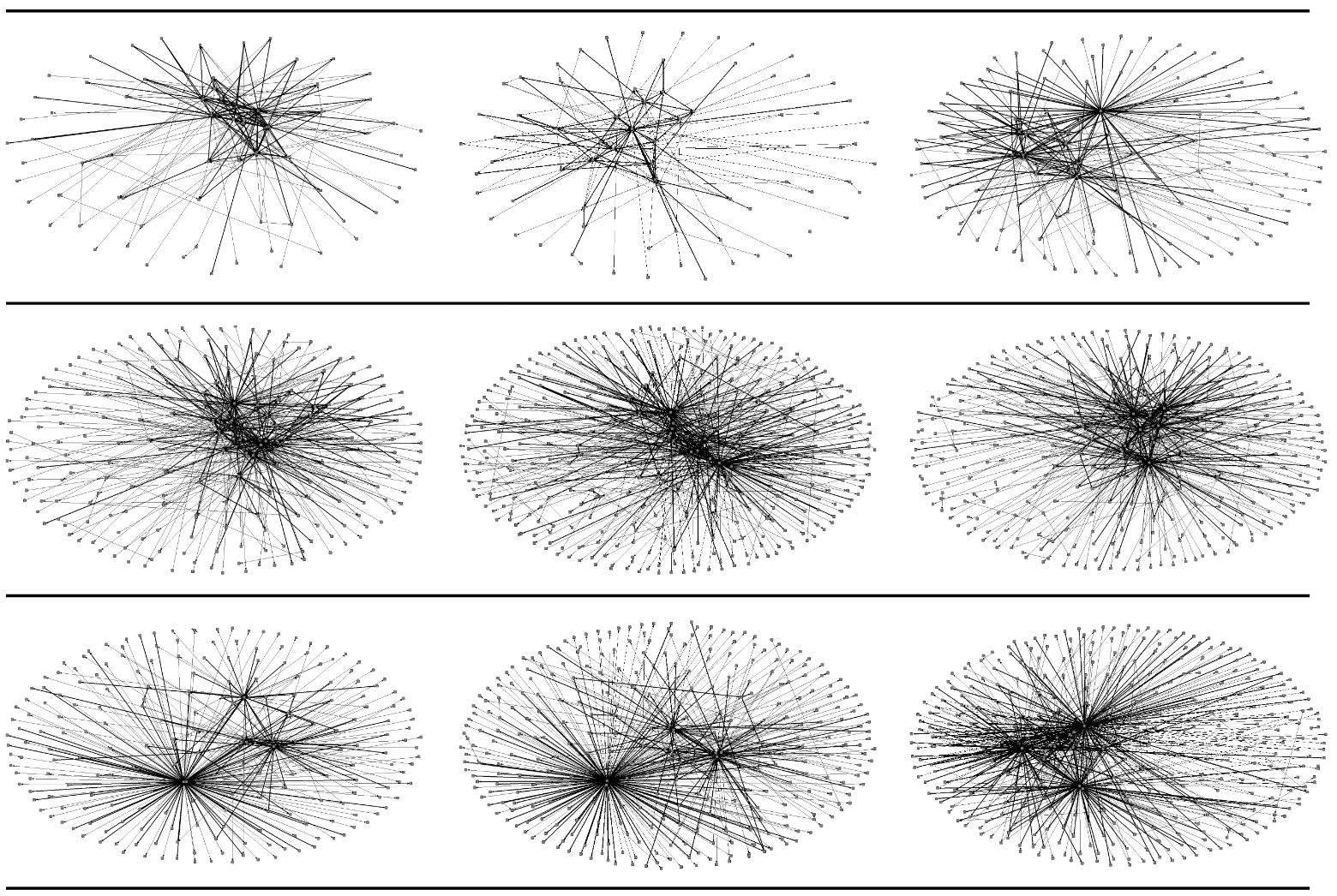Network Exchange Patterns
Samer Faraj and Steven L. Johnson (2011). Network Exchange Patterns in Online Communities. Organization Science, November/December 2011 22:1464-1480; published online before print December 29, 2010, DOI:10.1287/orsc.1100.0600. Full paper (PDF).
Abstract: Large-scale online communities rely on computer-mediated communication between participants, enabling them to sustain interactions and exchange on a scale hitherto unknown. Yet, little research has focused on how these online communities sustain themselves and how their interactions are structured. In this paper, we theorize and empirically measure the network exchange patterns of long-duration sustainable online communities. We propose that participation dynamics follow specific forms of social exchange: direct reciprocity, indirect reciprocity, and preferential attachment. We integrate diverse findings about individual participation motivations by identifying how individual behavior manifests in network-level structures of online communities. We studied five online communities over 27 months and analyzed 38,483 interactions using exponential random graph (p*) models and mixed-effects ANCOVA analysis.
In a test of competing models, we find that network exchange patterns in online community communication networks are characterized by direct reciprocity and indirect reciprocity patterns and, surprisingly, a tendency away from preferential attachment. Our findings undermine previous explanations that online exchange follows a power law distribution based on people wanting to connect to “popular” others in online communities. Our work contributes to theories of new organizational forms by identifying network exchange patterns that regulate participation and sustain online communities.
Steven L. Johnson, Samer Faraj and Srinivas Kudaravalli (2014). “Emergence of Power Laws in Online Communities: The Role of Social Mechanisms and Preferential Attachment“, MIS Quarterly, 38(3), p. 795-808.
Abstract: Online communities bring together individuals with shared interest in joint action or sustained interaction. Power law distributions of user popularity appear ubiquitous in online communities but their formation mechanisms are not well understood. This study tests for the formation of power law distributions via the mechanisms of preferential attachment, least efforts, direct reciprocity and indirect reciprocity. Preferential attachment, where new entrants favor connections with already popular participants, is the predominant explanation suggested by prior literature. Yet, the attribution of preferential attachment or any other mechanism as a single unitary reason for the emergence of power law distributions runs contrary to the social nature of online communities and does not account for diversity of participants’ motivation.
Agent based modeling is used to test if a single social mechanism alone or multiple mechanisms together can generate power law distributions observed in online communities. Data from 28 online communities is used to calibrate, validate, and analyze the simulation. Simulated communication networks are randomly generated according to parameters for each hypothesis. Then the fit of the power law distribution in the model testing subset is compared against the fit for these simulated networks. The major finding is that in contrast to research in more general network settings, neither preferential attachment nor any other single mechanism alone generates a power law distribution. Instead, a blended model of preferential attachment with other social network formation mechanisms was most consistent with power law distributions seen in online communities. This suggests the need to move away from stylized explanations of network emergence that rely on single theories toward more highly socialized and multi-theoretic explanations of community development.
Steven L. Johnson and Samer Faraj (2005), “Preferential Attachment and Mutuality in Electronic Knowledge Networks,” International Conference on Information Systems (ICIS 2005), December 2005, Las Vegas, NV. Full paper (PDF).
Abstract: The rapid adoption of Internet technology has accelerated the establishment of platforms for virtual interaction that overcome the inherent time and space limitations of face to face communication. The objective of this study is to investigate the individual and network level mechanisms that characterize interactions on these electronic knowledge networks (EKNs). Toward that goal, we develop a simulation model of a thread-based asynchronous EKN and provide results based on 330 runs of the model (simulating a total of 3,643,942 messages generated by 38,860 authors). This study contributes to our understanding of electronic knowledge networks by demonstrating the importance of structural characteristics in influencing participant behaviors. We focus specifically on the role of preferential attachment (the tendency to associate with the most popular participants) and mutuality (the tendency to maintain symmetry in relationships with others) in network formation. By using a simulation method and taking into account the nature of interpersonal ties, the study extends previous mathematical models of network formation to the specific setting of online knowledge exchange between individuals.
